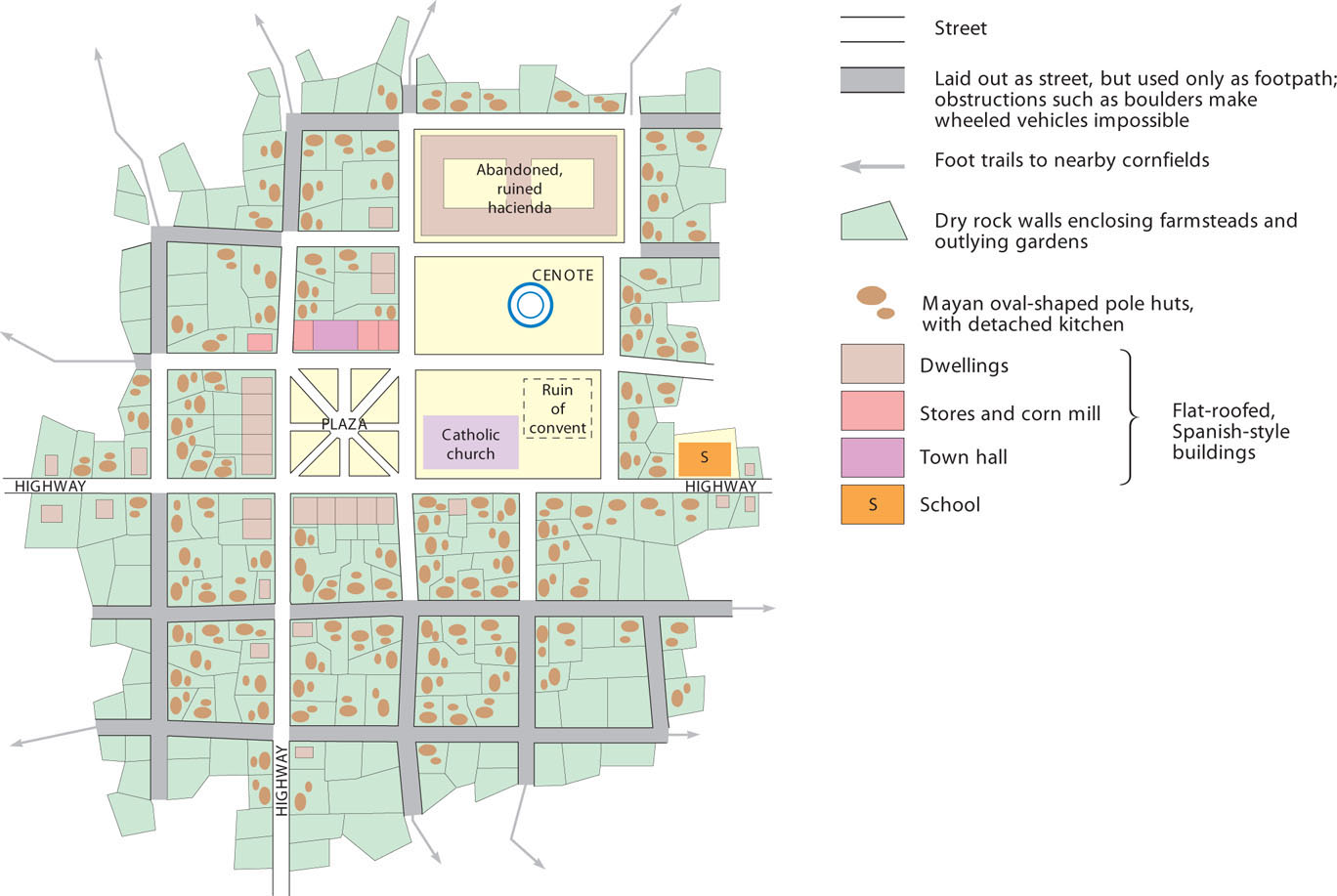
Figure 3.26: A hypothetical modern Mayan checkerboard farm village in Yucatán Province, Mexico. Spanish influence—seen in the grid pattern, plaza, church, hacienda, and flat-roofed buildings—weakens with distance from the center, and the rigid checkerboard masks a certain irregularity of farmstead layout. A cenote is a large, deep sinkhole filled with water, and these natural pools served a major religious function among the Mayas before Christianity came.